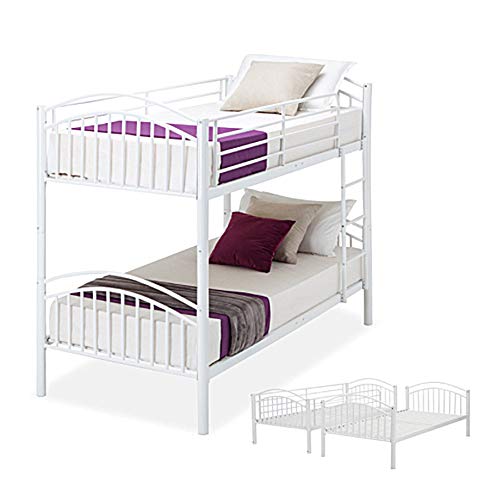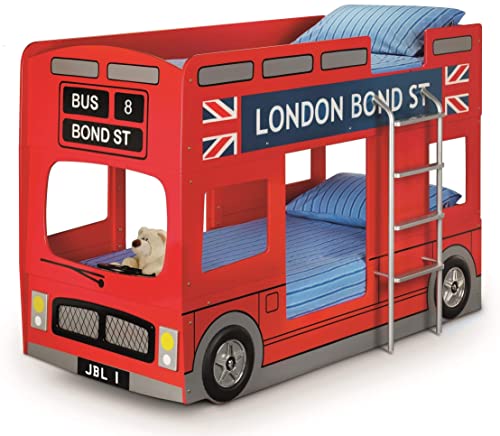Is Single Bunk Bed With Desk The Best Thing There Ever Was?
페이지 정보
작성자 Damon Hudgens 작성일 24-06-28 02:38 조회 5 댓글 0본문
 Choosing Single Bunk Beds
Choosing Single Bunk BedsIf parents are in search of bunk beds for their children, they search for models that are durable and functional. This set from Pottery Barn Teen has lots of fun features such as a desk that can be used to study and play.
Bunk beds often include ladders, which are often bent to facilitate climbing for younger kids. Some use rungs and slats to make space.
Size
Bunk beds are a great option to free up space in a bedroom and provide extra room for toys, books and other items. Many models are made to fit in twin beds, and include slats or bunk boards that eliminate the necessity for box springs. While they're designed for children, bunks also work well for teens and adults, as long as the weight limit isn't over. A mattress that is too heavy can cause the top or bottom bunk bed mattress single to slide and pose a safety risk for those who sleep on these levels.
A good rule of thumb is to pick a mattress that's about 1 inch more thick than your child's current mattress. This will ensure that your children will have ample space to stretch out, and it'll give a bit more cushioning for those that tend to snore. While it's not a requirement however, a memory foam or hybrid mattress is perfect for bunk beds as they mold to the body to help with circulation.
Check with your doctor prior to buying bunk beds. This will ensure that the bed won't interfere in any medical conditions. You'll feel secure knowing that you've made the best choice for your family and children.
When you are choosing a bunkbed it is essential that the design is in line with the style of your home. There are a variety of styles and finishes available and you're bound to find one that suits your style. Some designs are simple and simple, whereas others feature elaborate headboards or footboards to provide visual interest.
Some models come with drawers beneath the lower bunk for additional storage space in your kids' rooms. They're a great solution if your kids' rooms are messy or you don't have enough closet space.
Stork Craft's hardwood model is excellent choice for parents seeking to purchase a bunk bed that can expand with their child. It can fit two twin-sized beds on each level, and can be converted into two separate beds, freestanding, when the children are old enough to step out of the bunks.
Materials
The materials you pick for your bunk bed will depend on the style you want to achieve. You can pick top furniture-grade plywood, rustic, organic-looking 5-/4 pine or 2-by framing for modern appearance. You can also choose an older-fashioned constructed with welded joints. Regardless of your material choice, it's important to select strong wood that can support the weight of the mattress.
It is also important to consider the height of the bed and the location in your bedroom. This will determine the amount of space around the mattress, as well as how easy it is for you to get into and out of the bed. Use a stud-finder to locate the studs to be used to mount the frame.
The bunk bed is constructed from wood, and the ladder can also be used as a railing for the top bunk. This simple design is easy-to-follow and requires only a couple of pieces of wood. It's a low-cost DIY project. The plan also offers a safety buffer and plenty of space for storage under the bed.
Another excellent DIY bunk bed is this design with an incline that is built into the frame. This design is ideal to save space and makes it safe for children of all ages. The ladder can be adjusted to meet your child's height.
A fun option for bunk beds is this one that looks like the inside of a treehouse. This is a great idea for kids who love playing outdoors, but want the privacy of their own bed at the end of the day.
It is crucial to consider the ladder when building a bunkbed. It must be sturdy enough to allow children to safely climb up to the top and down again. Ladders that are constructed into the frame are usually more secure than ladders with angled sides which can be difficult for young children to navigate.
The bed was constructed with a welded method. However, it could be constructed using Kee Klamp fittings. The single bunk bed with storage Socket Tee, Flange, and 90 Degree Side Outlet Tee fittings would work well in this project. Kee fittings made of Klamp are easier to disassemble and put back together than threaded fittings. You can easily change the layout of the bunk bed in the future, if your kids decide to change their mind.
Safety
Bunk beds are a fun element to have in any child's room, but they can also be risky if they're not properly used. It is essential to follow the safety guidelines when using bunk beds, and to teach your children the correct method of using them. This will reduce any risks associated with these beds, and allow your children to sleep in them.
One of the most frequent reasons for bunk bed accidents is when a child slips off the top mattress or gets stuck. It's vital to make sure there are no gaps, or other places that your children could become trapped. Check that the edges of the bunk beds are smooth and that there aren't any protrusions or sharp edges that could cause injury to a child.
Another important aspect of safety is guard rails. Ideally, these should be set at least five inches over the lower bunk mattress. This will ensure that the child's head won't become trapped between the mattress and the bottom of the guard rail. The height of the guard rails needs to be consistent on all sides, and they should not be less than 3.5 inches apart.
It is also important to ensure that the gap between the mattress's foundation and the wall where the ladder is is less than 5 inches. It should fit well and be checked to make sure that there aren't any neck-entrapment dangers. To ensure this, you will be required to test the openings on both sides of the lower bunk with wedge blocks. The block should be able to pass through the opening without any obstruction. A rigid 9-inch sphere can also be used to test for neck entrapment.
The last thing to do is make sure that your bunk beds do not block ceiling blinds, fans, curtains or heaters. All of these could present a risk of strangulation. This will reduce any tripping or fire risks and help ensure that your children are not overheated while they sleep.
Design
When you are choosing a bunk bed, consider its overall design. This includes the overall look and how it will fit into your child's room. Bunk beds are available in a variety of sizes, including twin over full or twin over twin as well as full over double. There is also the option to get a futon-style bunk bed, which is a combination of an upper bed that is standard with a lower couch or platform that can be altered to be used as a sleeping space. Some bunk beds have stairs leading to the top of the bed instead of a ladder. Stairs can be safer for children, but they take up more space than ladders. If you opt for stairs, ensure they are placed with a guard rail and a sufficient space between the steps to avoid accidents.
Some bunk beds can be split into single Bed bunks beds if your children grow out of them or need their own space in a different room. This will save you money on a new bed, and give your children more space in their bedroom for activities.
You can add extra storage to your bunk beds by adding a set of drawers under the bottom bed or built-in shelving on the sides. This will keep your kids' rooms clean and organized, while providing them with additional storage space for toys, books and clothes. Nicole Fisher of BNR Interiors has added storage to this bunk bed for kids, turning it into a stylish workstation with drawers and shelves to store everything from school supplies to seasonal clothes.
When you design your bunk bed consider the color scheme and design you'd like to create. You can make a bunk bed with a nautical theme or a combination neutral and bright colors for a spacious style. The custom woodwork, like shiplap and moldings that make this bunk bed from Foxhole Farmhouse look like it's been in the room for years since it was constructed.

댓글목록 0
등록된 댓글이 없습니다.

